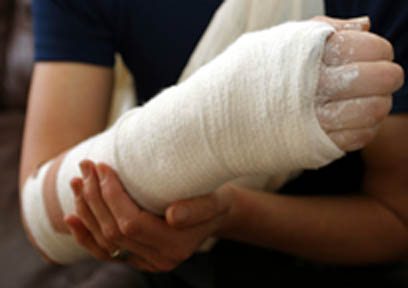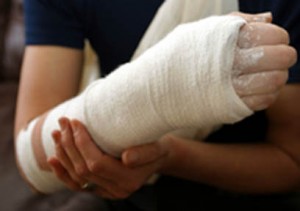Staff Writer
Broken bones, concussions, brain trauma and even death are just some of the dangers found in this high school sport. No it’s not boxing, football, or hockey. It is the All-American pep troop that is cheerleading.
Gone are the days of strictly waving pom poms and chanting catchy cheers. Today’s cheerleading has incorporated the high–flying moves of gymnastics and taken it up a level. “Cheerleading is a dangerous sport,” said co–captain Julia Backon ’09.
If you have ever seen the National High School Cheerleading Competition on ESPN, it is clear that these girls take much more of a risk than the fully padded guys that they are often cheering for.
According to the yearly report done by The National Center for Catastrophic Sport Injuries Research (NCCSIR), high school cheerleading directly caused 55 percent of all serious high school injuries to women from 1982–2007. And it had nearly fives time as many serious injuries as the next highest injury prone women’s sport, gymnastics.
Although the cheering that is often seen on the sidelines of football and basketball games are commonly perceived as elementary, cheerleading can be a very risky sport.
Thankfully the Staples’ cheerleaders have, for the most part, been able to avoid serious injury.
“There have been a couple broken noses, a few concussions and a lot of bruises, but no one has really had a serious injury,” said Backon.
The root of Staples’ safety can be traced to the many safety precautions that are put into place to help prevent serious injury. Some of these precautions include the use of mats to absorb the force of landing and the relentless practicing of stunts.
But possibly the most important safety precaution is the trust cheerleaders form with each other.
“The team trusts one other with our lives. [As a flier], I know my teammates would never drop me on my back. I’m able to worry about my job and they worry about theirs,” said Backon.
However, the measures put into place do not stem the statistics, which reveal the dangers of the sport. Only so much can be done when girls are constantly thrown over 15 feet in the air.
Such was the case of Lindsay Nelson ’11 who had to get seven stitches from practicing a stunt.
“We get injured a lot, [but] you’ll never hit a trick without injuries. Even if we get injured, we have to keep practicing,” said Nelson.
According to the Staples cheerleading coach, Jennifer Maloney, the sport’s many serious injuries are not a result of the moves performed, but a deeper problem.
Maloney’s job does not only cover teaching dance routines to the team – she must teach the girls how to execute the moves both accurately and safely.
“Unqualified coaches teaching the wrong ways to perform dangerous moves are the real reason for the number of injuries,” said Maloney. “Unsupervised cheerleading is another leading cause.”
Nevertheless, girls from Staples to high schools all cross the nation continue to cheerlead, knowing full well the dangers of the sport.
“We signed up for this knowing what we were getting into,” said Backon. “We put in a lot of hard work and practice in order to do this.”
These girls have the choice whether or not to join the sport that has a great deal of risk. While at times cheerleading can be as dangerous as any high school sport out there, it can also be regulated in a safe manner.
This matter dramatically lessens the chance of injury in a sport that is statistically the most dangerous high school sport.














































